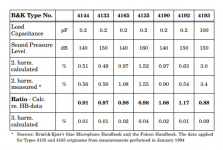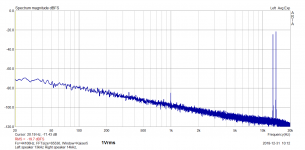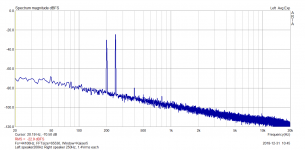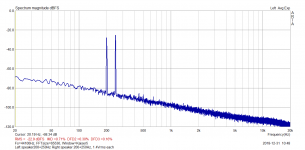Leave picking apart grammar and word usage to those pros then. We really don't need anyone else piling on that heap. Not unless you feel they aren't up to the task ... do you?
-Chris
-Chris
Deciding who the pros are is the crossroads here. You tell me what camp we will subscribe to here and I will oblige. To me with this one it either boils down to the way Mix magazine would refer to a microphone or some grammar snobs. Just let me know.Leave picking apart grammar and word usage to those pros then. We really don't need anyone else piling on that heap. Not unless you feel they aren't up to the task ... do you?
-Chris
Hi Robert,
You defined who the experts are here and informed you were merely trundling along behind them - blindly it would seem.
Search engines. Normally Google to find the home sites where real information is stored. Being technical in nature I have zero time for public media and wherever you might look for information. Much of my research comes from my own library of real books, and some PDF files for recent stuff. No "white papers" though. Those are just adverts of questionable quality.
You seem vicious tonight Robert. First you blurt out some non-essential information that is only an echo from your favorite main characters. Then you go rabbit when I observed that you were doing that.
I guess sales must be slow. No more products to assemble?
-Chris
You defined who the experts are here and informed you were merely trundling along behind them - blindly it would seem.
Search engines. Normally Google to find the home sites where real information is stored. Being technical in nature I have zero time for public media and wherever you might look for information. Much of my research comes from my own library of real books, and some PDF files for recent stuff. No "white papers" though. Those are just adverts of questionable quality.
You seem vicious tonight Robert. First you blurt out some non-essential information that is only an echo from your favorite main characters. Then you go rabbit when I observed that you were doing that.
I guess sales must be slow. No more products to assemble?
-Chris
Oh yeah, MF for micro-farad and MMF for micro-micro-farad. I saw a lot of "condensers" marked like that when I was growing up and taking apart TVs.Ok so we will refer to a mic as a mike. Capacitor will be now known as condenser and ghz will now be known as kilo-mega cycles. Any other retro terms we should be using?
Nowadays TV condensers say 85C, or maybe 105C - that must be how many coulombs the condenser holds.
Back on topic, I couldn't resist ordering the previously-discussed Dayton Audio B652s. I can't wait to compare with my Boston Acoustics HD5's, which I like except that the bass sounds funny. I know, it's shocking that I said 'the bass' because other speakers this size generally don't have bass. Perhaps I shouldn't complain about the funny bass.
What search engine do you use? Dogpile maybe?
Plenty of dogpiles these days.
Yes it is, really. Silly isn't it. I'm just following the lead of PMA and JC. I guess they know more than the rest of the wider publishing world and google too.
Since you and everyone else knew what PMA meant right away, there was no point in attempting to "correct" him. No one cares.
Totally the opposite.I guess sales must be slow. No more products to assemble?
-Chris
You would love if I was tanking wouldn’t you. That would just confirm your perception of me.
Hi Robert,
No. I don't wish you any ill.
It's just that you use that as an excuse to exit a conversation often times. That the entire reason I made that reference.
Good night Robert. It's nearly 1 AM here and I'm off to bed.
-Chris
No. I don't wish you any ill.
It's just that you use that as an excuse to exit a conversation often times. That the entire reason I made that reference.
Good night Robert. It's nearly 1 AM here and I'm off to bed.
-Chris
Actually that is the first time I had seen that spelling.Since you and everyone else knew what PMA meant right away, there was no point in attempting to "correct" him. No one cares.
Good night. I’ll be working until about 1am here.Hi Robert,
No. I don't wish you any ill.
It's just that you use that as an excuse to exit a conversation often times. That the entire reason I made that reference.
Good night Robert. It's nearly 1 AM here and I'm off to bed.
-Chris
What mike preamp did you use Demian? A 2619? If so, you have a problem. If a portable sound level meter preamp, I can understand.
I have several 2619's. They all show the same issue. The HP was much better. Its too late tonight. I'll try to redo those measurements and scan the circuits. its not clear why the B&K was worse or if its related to the host measuring amp.
Here are some interesting links re: distortion in B&K microphones
https://pdfs.semanticscholar.org/e9f8/5980d82b1d8f9bcc2574e38f0c1ef162d07d.pdf
https://www.bksv.com/media/doc/083-80.pdf
The chart is from : https://www.bksv.com/media/doc/bv0048.pdf pg 28.
More soon.
Attachments
...By two air gaps, do you mean above and below the coil? I would actually consider that as one. If you mean the gap in a neo magnet (neo mu approaches 1), the magnet gap would dominate.
That said, the entire purpose of the iron is to get the gap field up to the 1.5 tesla range, and that is quite difficult for normal iron. It tends to saturate and then the field can just go anywhere it wants to. It's magnetic anarchy I tell ya!!!...
Hi JN!
By two gaps I was referring to the air on either side of the coil (inside/outside) in series with the magnetic path.
So you are saying that the PM is strong enough in the driver you are using as a reference, even with the fairly large total air gap to saturate the front plate, center pole, or back plate in the driver you are referencing? I remember testing some Aura woofers some years ago with radial arrays of neo magnets which (big assumption here) should have had much higher flux density (2-5x) than a comparable size or weight ferrite structure. Those drivers did indeed have a generous vented one-piece yoke and front plate, but my thought here is: if the front or rear plates or center pole were saturating the additional PM B would be for naught. Without data here I am speculating, so many variables comparing two drivers....cross-sectional area and alloy of the plates/pole piece, grade of the magnets, etc...
Enjoying your brain dumps, magnet man!
Howie
I use it a lot.
" Information is not knowledge........etc,etc,etc...." 😉
Neither do you any good unless you work hard at a goal. It doesn’t matter what pipeline it comes to you through." Information is not knowledge........etc,etc,etc...." 😉
Last edited:
OK, one more tweeter/microphone IM test. Today is a quiet day, no background noise 😀.
Again, two tweeters, now SEAS T25CF001, playing 13kHz and 14kHz
1st plot, left speaker = 13kHz, right speaker = 14kHz,
2nd plot, both speakers playing 13+14kHz twin tone.
Voltage at each tweeter is 1Vrms. Measured at 1.5m distance.
Those T25CF001 are fine drivers, with low IM distortion.
It seems that mike+preamp H2 is about <= -65dB. H3 and highers are a non-issue.
Again, two tweeters, now SEAS T25CF001, playing 13kHz and 14kHz
1st plot, left speaker = 13kHz, right speaker = 14kHz,
2nd plot, both speakers playing 13+14kHz twin tone.
Voltage at each tweeter is 1Vrms. Measured at 1.5m distance.
Those T25CF001 are fine drivers, with low IM distortion.
It seems that mike+preamp H2 is about <= -65dB. H3 and highers are a non-issue.
Attachments
Last edited:
Same IM test, with SEAS W18NX001, 200+250Hz, 1.4Vrms at each driver. The measurements are almost "clean" in both cases now, when drivers are supplied with a single tone or a twin tone. Yes resolution is now lower than in a nearfield measurement, H2 difference tone may be hidden in noise.
Attachments
And a happy new year...
Scott as usual, reciprocity acoustic measurements use one transducer as the source and the other as the microphone. Then the measurement is redone switching the source unit to the microphone and the microphone unit to the source. That is how measurement microphones are tested when used as standards.
Scott as usual, reciprocity acoustic measurements use one transducer as the source and the other as the microphone. Then the measurement is redone switching the source unit to the microphone and the microphone unit to the source. That is how measurement microphones are tested when used as standards.
- Status
- Not open for further replies.
- Home
- Member Areas
- The Lounge
- John Curl's Blowtorch preamplifier part III




